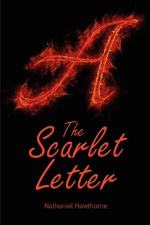|
|
The Scarlet Letter Topic Tracking: Law
Law in the new Massachusetts Puritan colony is equated with religious and moral law. In addition, people believe that the law of heaven, with its separation of good and evil, the sinners from the righteous, is the highest and truest law. This is closely linked to the idea that the destiny of people who have broken the law is determined, and they must fight their destiny for the rest of their lives.
Law 1: The narrator (Nathaniel Hawthorne) feels guilt because his ancestors persecuted people in the Salem Witch Trials, under a strict set of laws.
Law 2: The old, semi-retired employees of the Custom House fear Hawthorne because they are lax in their enforcement of the law, whereas Hawthorne is not.
Law 3: In the new colony of Boston, the Jail, which was considered the central place of law enforcement, and the cemetery were the first two structures to be erected.
Law 4: The scaffolds, where people are punished in accordance with the strict laws of the Puritans, were often used.
Law 5: The Beadle, who enforces and carries out the laws at the Jail, is described as "grim and grisly," and a "black shadow."
Law 6 and 7: The townspeople are shocked by the scarlet letter and its garishness because it goes against the strict laws of the land, which are closely associated with religion.
Law 8: Chillingworth observes Hester and Pearl from a high window as Pearl plays in the town square, and says "There is no law...mixed up with that child's composition." (pg. 123)
Law 9: The townspeople copy a great Elizabethan, English tradition which is much more showy and elaborate than anything that exists in the New World. However, this previously rejected tradition lends credence and validity to the new government.
Law 10: The Election sermon, which is the most important event of the year, is a mix of law and religion.
Law 11: Dimmesdale refers to the Heavenly law of marriage that was broken by he and Hester, and how that transgression may prevent the two from ever meeting in heaven.




